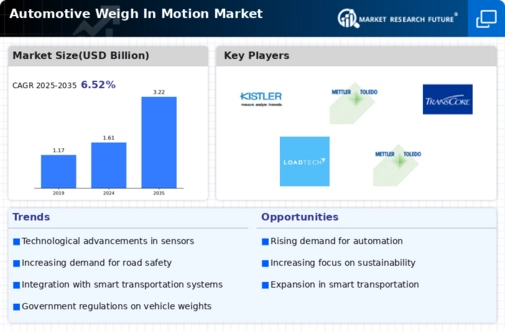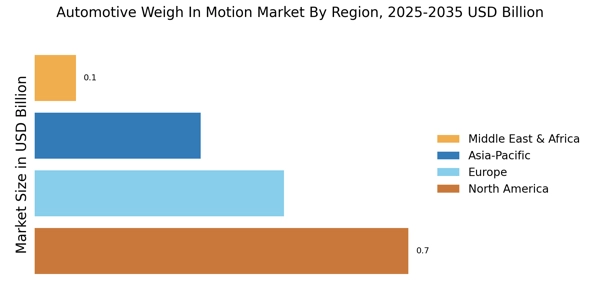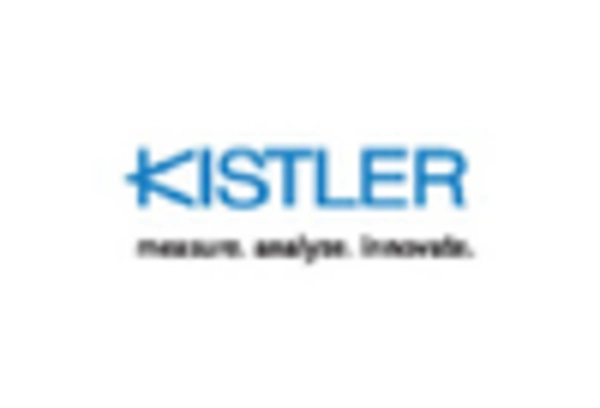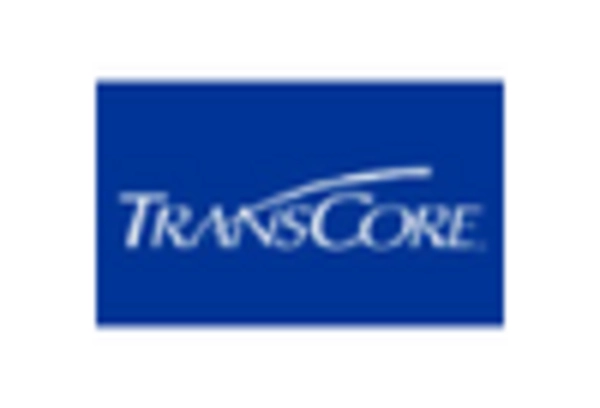Rising Freight Traffic
The Automotive Weigh In Motion Market is significantly influenced by the increasing volume of freight traffic. As global trade expands, the demand for efficient transportation solutions rises correspondingly. In 2025, freight traffic is projected to grow by approximately 20%, necessitating the implementation of weigh-in-motion systems to manage this surge effectively. These systems enable transportation authorities to monitor vehicle weights without impeding traffic flow, thus optimizing road usage. The ability to collect data on vehicle weights and traffic patterns also aids in strategic planning for infrastructure development. Consequently, the rising freight traffic is expected to propel the Automotive Weigh In Motion Market forward, as stakeholders seek to enhance operational efficiency and compliance with weight regulations.
Environmental Regulations
The Automotive Weigh In Motion Market is increasingly shaped by stringent environmental regulations aimed at reducing carbon emissions and promoting sustainable transportation. Governments worldwide are implementing policies that require compliance with weight limits to minimize road damage and enhance fuel efficiency. In 2025, it is anticipated that these regulations will become more rigorous, compelling transportation companies to adopt weigh-in-motion systems to ensure adherence. By monitoring vehicle weights in real-time, companies can optimize their fleets, reduce emissions, and improve overall operational efficiency. This regulatory landscape is likely to drive investments in the Automotive Weigh In Motion Market, as stakeholders seek to align with environmental goals while maintaining compliance with evolving standards.
Technological Innovations
Technological advancements are a driving force in the Automotive Weigh In Motion Market. Innovations such as advanced sensors, data analytics, and machine learning algorithms are enhancing the accuracy and efficiency of weigh-in-motion systems. In 2025, the market is likely to witness a surge in the adoption of these technologies, as they provide real-time data that can be utilized for traffic management and enforcement. The integration of Internet of Things (IoT) capabilities allows for seamless communication between vehicles and infrastructure, further optimizing weight monitoring processes. This technological evolution not only improves operational efficiency but also supports the development of smart transportation systems. As a result, the Automotive Weigh In Motion Market is poised for substantial growth driven by these innovations.
Increased Demand for Road Safety
The Automotive Weigh In Motion Market is experiencing heightened demand for enhanced road safety measures. As governments and transportation authorities prioritize the reduction of road accidents, the implementation of weigh-in-motion systems becomes crucial. These systems facilitate real-time monitoring of vehicle weights, ensuring compliance with legal weight limits. In 2025, it is estimated that the adoption of such technologies could lead to a 15% decrease in overweight vehicle incidents, thereby improving overall road safety. Furthermore, the integration of these systems into existing infrastructure supports the enforcement of regulations, which is vital for maintaining safe transportation networks. This growing emphasis on safety is likely to drive investments in the Automotive Weigh In Motion Market, as stakeholders recognize the importance of protecting both road users and infrastructure.
Integration with Smart Infrastructure
The Automotive Weigh In Motion Market is witnessing a trend towards integration with smart infrastructure initiatives. As cities evolve into smart environments, the need for efficient traffic management systems becomes paramount. Weigh-in-motion technologies play a critical role in this transformation by providing essential data for traffic analysis and planning. In 2025, the integration of these systems with smart city frameworks is expected to enhance the overall efficiency of transportation networks. By facilitating real-time monitoring of vehicle weights, authorities can make informed decisions regarding road usage and maintenance. This synergy between weigh-in-motion systems and smart infrastructure is likely to drive growth in the Automotive Weigh In Motion Market, as stakeholders recognize the benefits of data-driven decision-making in urban planning.


















Leave a Comment